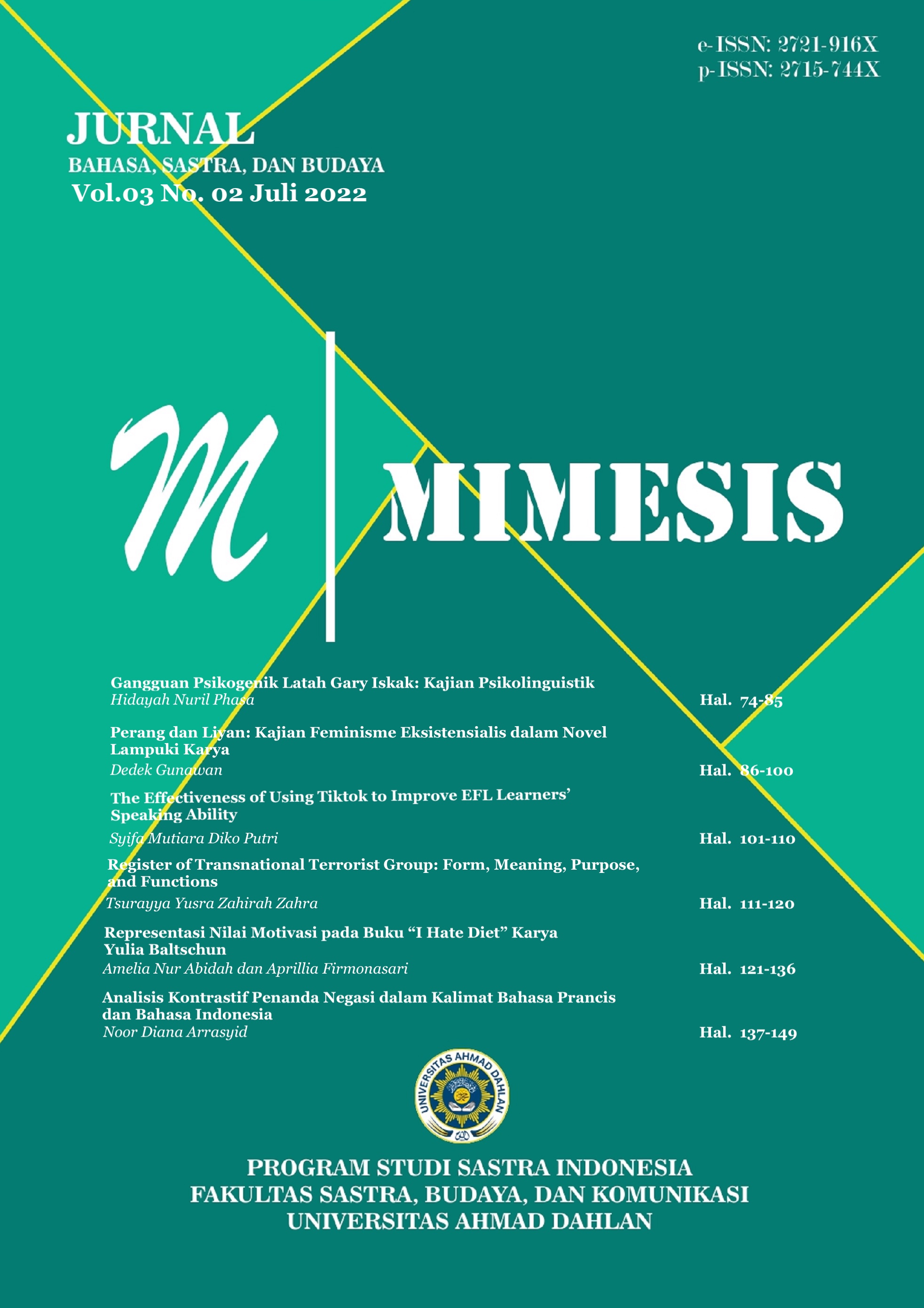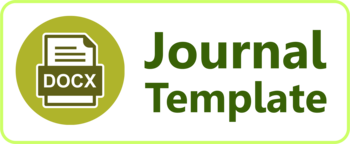GANGGUAN PSIKOGENIK LATAH GARY ISKAK: KAJIAN PSIKOLINGUISTIK
DOI:
https://doi.org/10.12928/mms.v3i2.5712Keywords:
Psycholinguistics , Psychogenic, talkative types, talkative causesAbstract
This research is motivated by the stigma of talkativeness suffered by women, people with low education, and belonging to the lower economic class category. The research entitled "Psychogenic Disorder of Talkative Gary Iskak (Psycholinguistic Study)" aims to describe the talkative and the background of talkative sufferers towards artist Gary Iskak. The theory used in this research is the talkative theory of Abdul Chaer and Soenjono Darjowidjodjo with a psycholinguistic approach. The data collection method used is the referential method with the note-taking technique. In contrast, the data analysis method is the referential method with the determining determinants or the PUP technique. The results found in this study are that there are four general reaction types: Ekolalia, Ekopraxia, Auto Ekolalia, and Automatic Obedience. Then the two types of talkative reactions that are not included in the four categories are a mixture of Ekolalia and Ekopraxia talkative and the impact of voice talk. In addition to the type of talkativeness, it was also found that the factors causing the talkativeness experienced by Gary Iskak when he was in several events found four causes of talkativeness. Among the four, the most frequent cause of talkativeness is being surprised by other people's movements.
References
Chaer, A. (2015). Psikolinguistik - Kajian Teoritik. Rineka Cipta.
Dardjowidjojo, S. (2010). Psikolinguistik : Pengantar Pemahaman Bahasa Manusia. Yayasan Pustaka Obor Indonesia.
GTV-Komedi. (2020). Kocak! Gary Iskak Latah Banget Dijailin Bopak (Video Youtube).
ID, G. (2020). Ekslusif Film Mangga Muda (video Youtube).
Indah, R. N. (2015). Gangguan Berbahasa. In Wardah (Vol. 15, Issue 1). UIN-Maliki Press.
Indah, R. N. (2017). Gangguan berbahasa: Kajian pengantar (UNSPECIFIED, Ed.). UIN-Maliki Press.
Mahsun, M. (2014). Metode Penelitian Bahasa. Rajawali Pers.
Official, T. (2020). Kedai Pak Mantep.
Sudaryanto. (1993). Metode dan aneka teknik analisis bahasa : pengantar penelitian wahana kebudayaan secara linguistis / Sudaryanto. Duta Wacana University Press.
Tanner, C. M., & Chamberland, J. (2001). Latah in Jakarta, Indonesia. Movement Disorders : Official Journal of the Movement Disorder Society, 16(3), 526–529. https://doi.org/10.1002/mds.1088
Downloads
Published
Issue
Section
License
Copyright (c) 2022 Hidayah Nuril Phasa

This work is licensed under a Creative Commons Attribution-ShareAlike 4.0 International License.
License and Copyright Agreement
In submitting the manuscript to the journal, the authors certify that:
- They are authorized by their co-authors to enter into these arrangements.
- The work described has not been formally published before, except in the form of an abstract or as part of a published lecture, review, thesis, or overlay journal.
- That it is not under consideration for publication elsewhere,
- That its publication has been approved by all the author(s) and by the responsible authorities tacitly or explicitly of the institutes where the work has been carried out.
- They secure the right to reproduce any material that has already been published or copyrighted elsewhere.
- They agree to the following license and copyright agreement.
Copyright
Authors who publish with Mimesis agree to the following terms:
- Authors retain copyright and grant the journal right of first publication with the work simultaneously licensed under a Creative Commons Attribution License (CC BY-SA 4.0) that allows others to share the work with an acknowledgment of the work's authorship and initial publication in this journal.
- Authors are able to enter into separate, additional contractual arrangements for the non-exclusive distribution of the journal's published version of the work (e.g., post it to an institutional repository or publish it in a book), with an acknowledgment of its initial publication in this journal.
- Authors are permitted and encouraged to post their work online (e.g., in institutional repositories or on their website) prior to and during the submission process, as it can lead to productive exchanges, as well as earlier and greater citation of published work.











